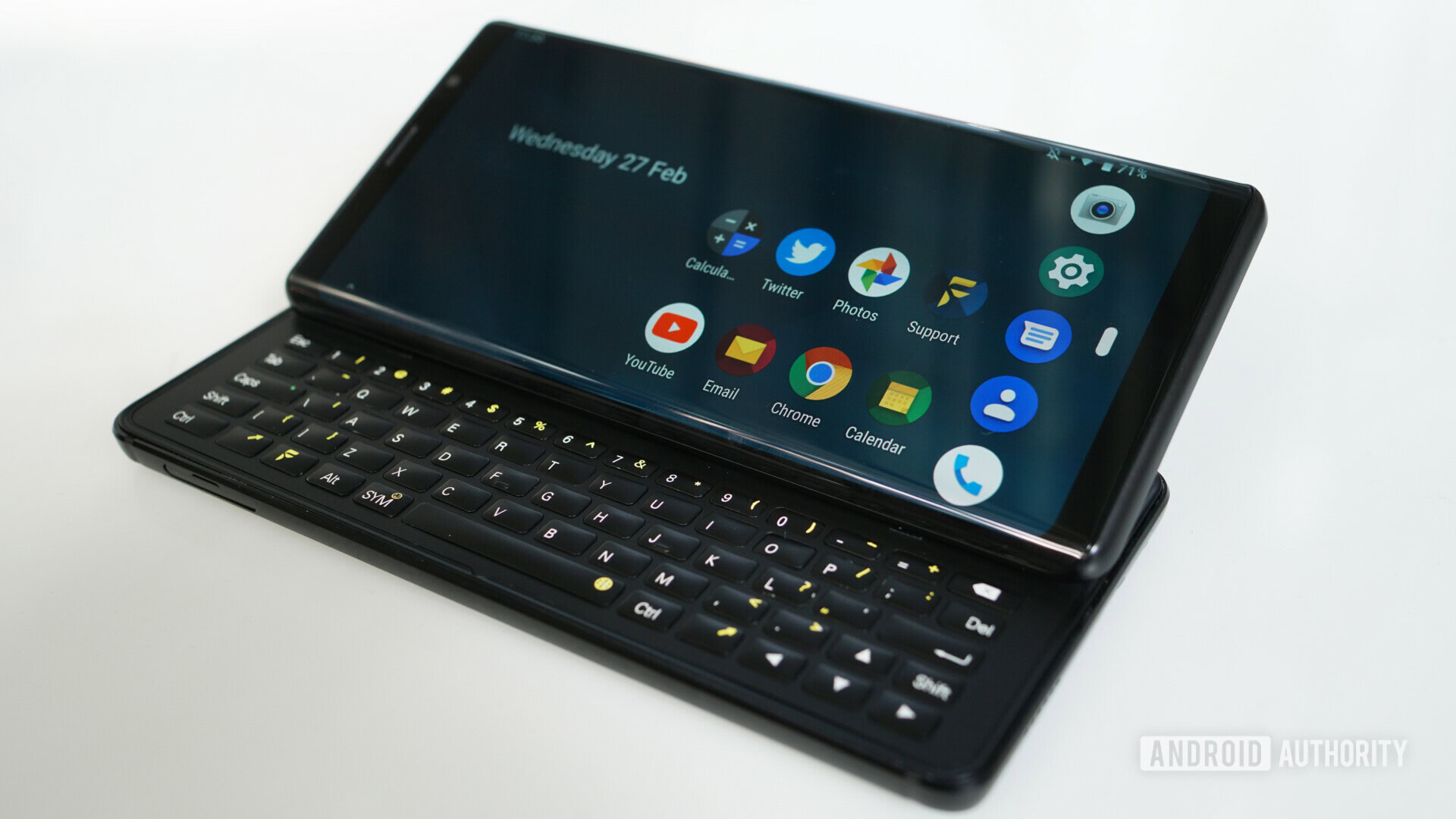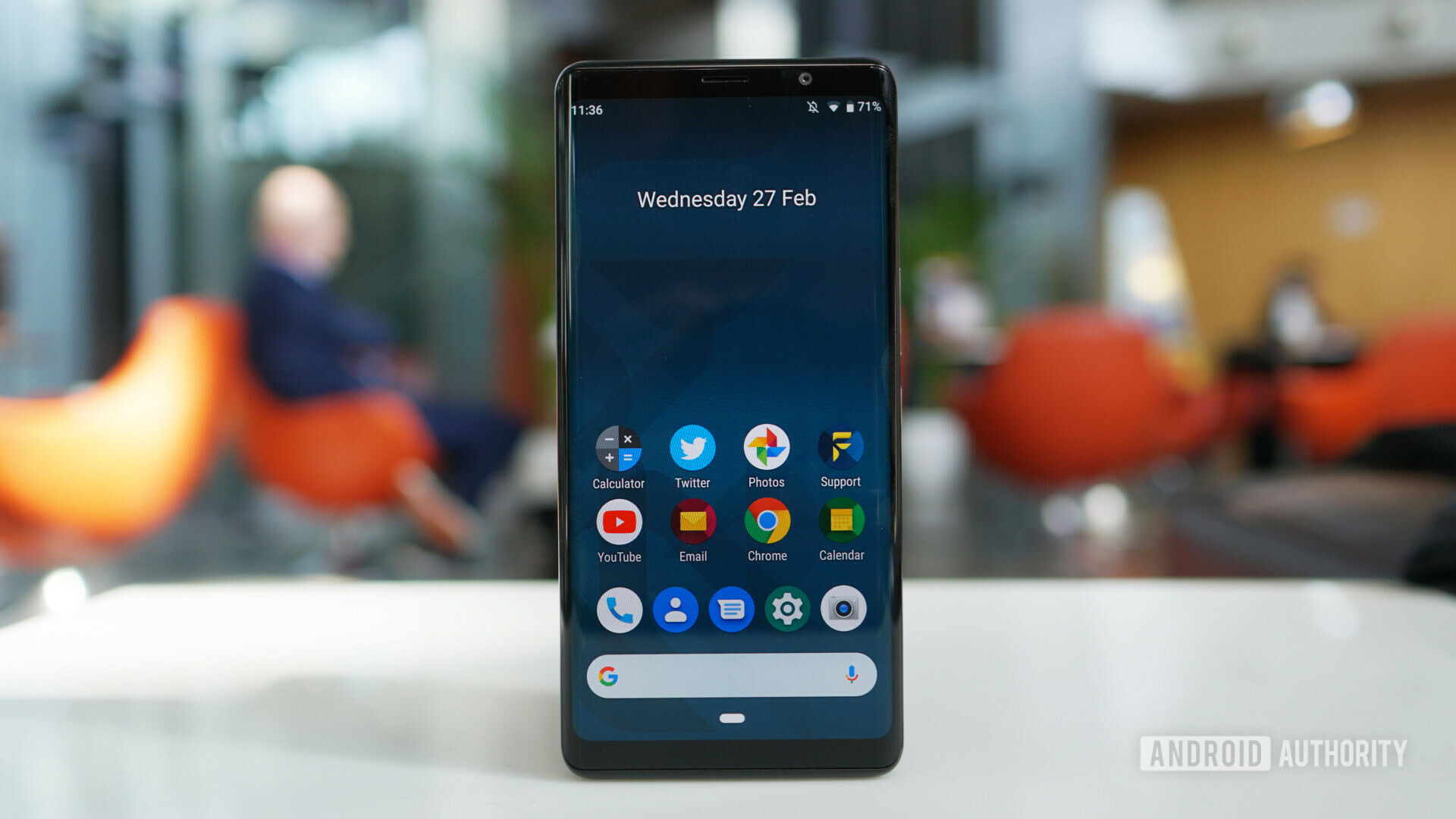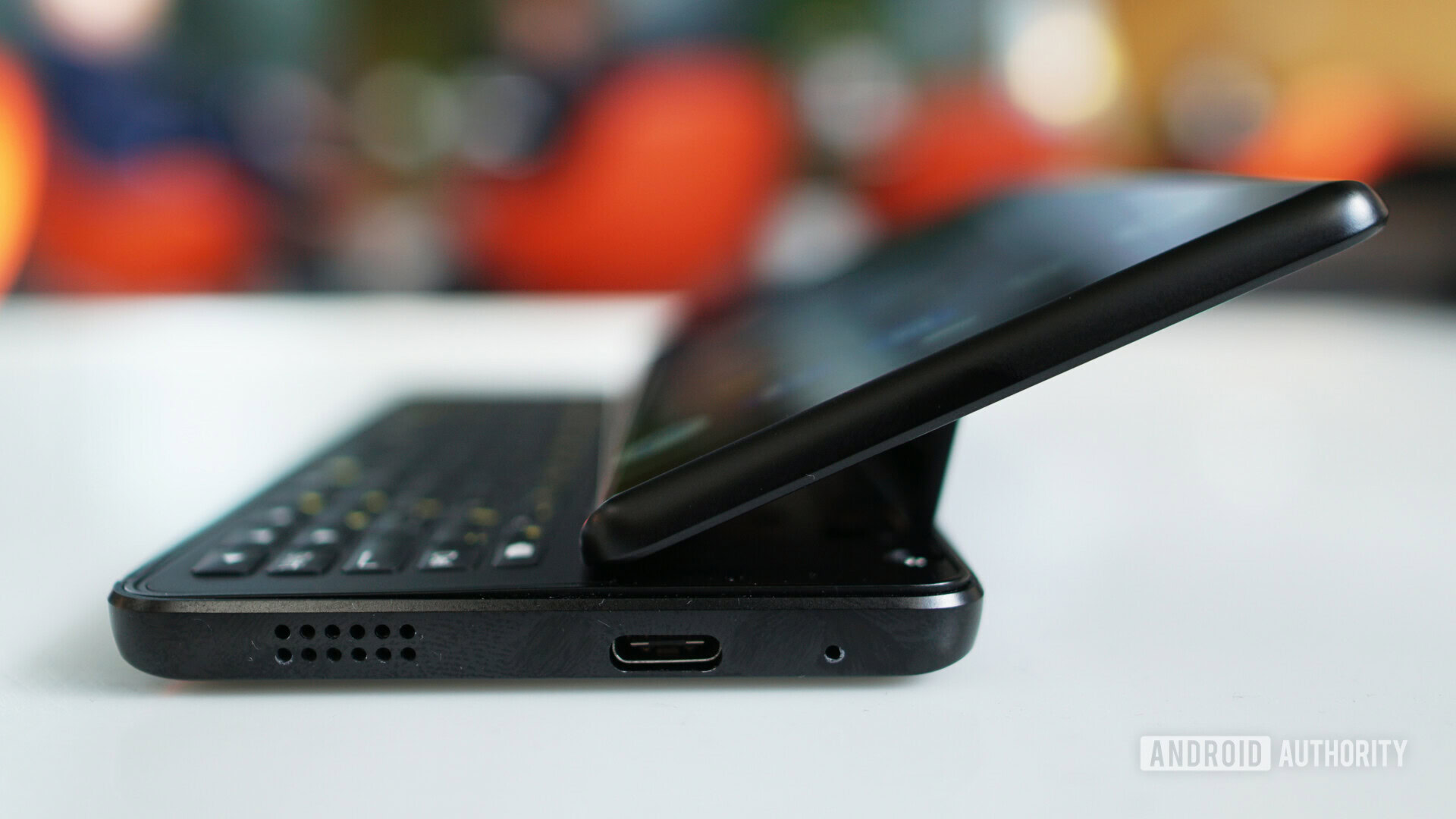Affiliate links on Android Authority may earn us a commission. Learn more.
Fxtec Pro1 hands-on: The sliding QWERTY keyboard phone is back
Published onMay 22, 2019

Back in the day, there were several phones with sliding QWERTY keyboards like the T-Mobile Sidekick, the original Motorola Droid and the HTCmyTouch 4G Slide (see, phones had bad names even then). However, touchscreens quickly became a more popular input method and sliding keyboards became a thing of the past. Despite this, many of us never lost our nostalgic attachment to physical keyboards or sliders – and now they’re back. Again.
A London-based startup company called Fxtec wants to bring real keyboards back to Android smartphones. The company’s mantra basically revolves around updating the classic tech of yesteryear for today’s demands. During MWC 2019, it showed off its first phone, the horrendously named Fxtec Pro1, with a display that hides a sliding landscape QWERTY keyboard.
My initial response to seeing the Pro1 was a pleasant surprise. Seeing that it looked like a pretty regular phone running stock Android+ in normal mode was nice, but seeing it flick open for the first time instantly made me want to grab it. I have to admit it took me a few minutes to perfect the hand movements required to gently lift the screen with your index fingers while simultaneously pushing with your thumbs on the opposite side, but once I got it the experience was every bit as pleasurable as it was back in the good old days.

The hinge is nicely designed with three points of contact (the large spine plus two smaller bridges closer to the keyboard) to keep it rigid and a satisfying snap when it opens or closes. Unlike many older sliders there’s very little travel here at all. The slider mechanism tilts the display to a 155-degree angle, which basically turns the keyboard into a kickstand for the screen. The Fxtec team even decided to ensure to avoid a camera bump, a very modern problem we didn’t have when QWERTY sliders were popular.
The Pro1 has a dedicated shutter button, stereo speakers on the top and bottom edge, side-mounted capacitive fingerprint scanner, USB-C with HDMI support, and yes, it goes all old school and even includes a 3.5mm headphone port. It runs a very stock-like version of Android with some minor customizations like landscape-optimized email and calendar apps. Landscape-mode app switching has also been added and the team says it is very open to working with the developer community to enhance the Pro1’s capabilities.
The Pro1’s keyboard has five staggered rows and 64 backlit keys. It is just as pokey and reassuring as physical keyboards have always been, but some slight redesigns have apparently improved the experience over what we used to have. I didn’t really get to use it enough to confirm this, and to be quite honest, my thumb-typing skills have atrophied quite badly. I’m sure it would only take a few days with the Pro1 to have you typing at full-speed again (assuming you ever typed on a physical QWERTY keyboard before).
The Pro1 runs Android 9 but the software was in a very early stage and so wasn’t at all reliable. The Fxtec team did say they have committed to the same 90-day Android update window that Android One devices enjoy. It’s impossible to say how good the software will be on the Pro1 when it is released, so stay tuned for our full Fxtec Pro1 review when the time comes. What I can say now is that the Pro1 doesn’t feel at all like an oddity you have to “deal with” to get some physical typing action. It looks and feels just like a regular phone, albeit one that’s a little thicker than most, until you slide it open.

| Fxtec Pro1 | |
|---|---|
Display | 5.99-inch, FHD+(2160x1080) AMOLED display |
Processor | Qualcomm Snapdragon 835 |
RAM | 6GB |
Storage | 128GB |
MicroSD | Yes up to 2TB |
Battery | 3,200mAh, USB Type-C |
Cameras | Rear: 12MP (Sony IMX363), f/1.8, 1.4μm pixels + 5MP, fixed focus, f/2.0 Front: 8MP, fixed focus, f/2.0 |
Wireless charging | No |
Water resistance | No |
Security | Side fingerprint sensor |
Connectivity | 3.5mm headphone jack, Bluetooth 5.0 NFC |
SIM | Dual-SIM |
Software | Android 9 Pie |
Dimensions | 154x73.6x13.98 mm |
The Fxtec Pro1’s other hardware specs include a 5.99-inch AMOLED display with a resolution of 2,160 x 1,080. I’m told the Pro1 will ship with a BOE-supplied OLED panel. Perhaps a little disappointingly for chipset hounds, the Pro1 uses the Qualcomm Snapdragon 835 processor. While it may be an outdated processor it is one we have come to know as reliable. The Pro 1 specs include 6GB of RAM with 128GB of onboard storage, expandable via microSD card with the hybrid dual-SIM tray. The Pro1 supports a ton of global bands so it should work on your carrier at home and when you travel.
The Fxtec Pro1 camera is a dual setup with 12MP and 5MP sensors, the latter of which is used for depth sensing, along with an 8MP selfie camera. There’s no wireless charging here, but the Pro1 ships with a 3,200mAh battery. There’s obviously no chance of an IP rating but that is true of any slider phone these days.
Besides the aging chipset, the only other possible sticking point might be the price: at $649 the Pro1 isn’t super cheap, but it’s also not super basic. If you can live with the Snapdragon 835 in 2019 and have an unscratched itch for a physical keyboard and slider combo, you’re definitely going to want to check this phone out. Even if you don’t end up buying one, I’m sure you’ll walk away just as happy as I did with the experience.
Who is Fxtec?
Never heard of Fxtec? Me either until today. The people behind Fxtec includes team members that were behind the Livermorium QWERTY keyboard Moto Mod for Motorola’s Moto Z series of phones. As you may recall, after raising $170,000 in funding for its Keyboard Moto Mod via Indiegogo in 2017, the team canceled the project in September 2018. They cited a number of issues, including a lack of sales for the Moto Z series in general, and also that the Keyboard Mod itself would have been too thick and heavy to go on the back of the phone.
So the group regrouped, renamed itself as Fxtec, and started developing its own smartphone with a built-in QWERTY keyboard. The final result will be the Fxtec Pro1. Fxtec says the actual sliding mechanism was inspired by similar setups on phones like the Nokia E7 and N950. So now you know.
The Fxtec Pro1 will go on sale in July for $649 and pre-orders are now available on the Fxtec website.